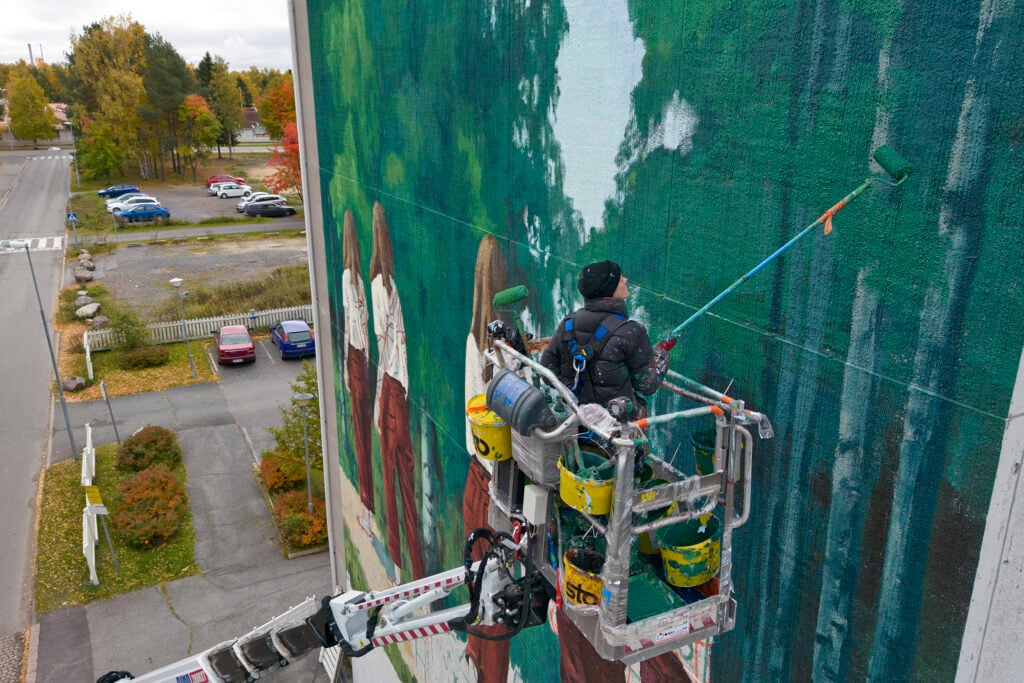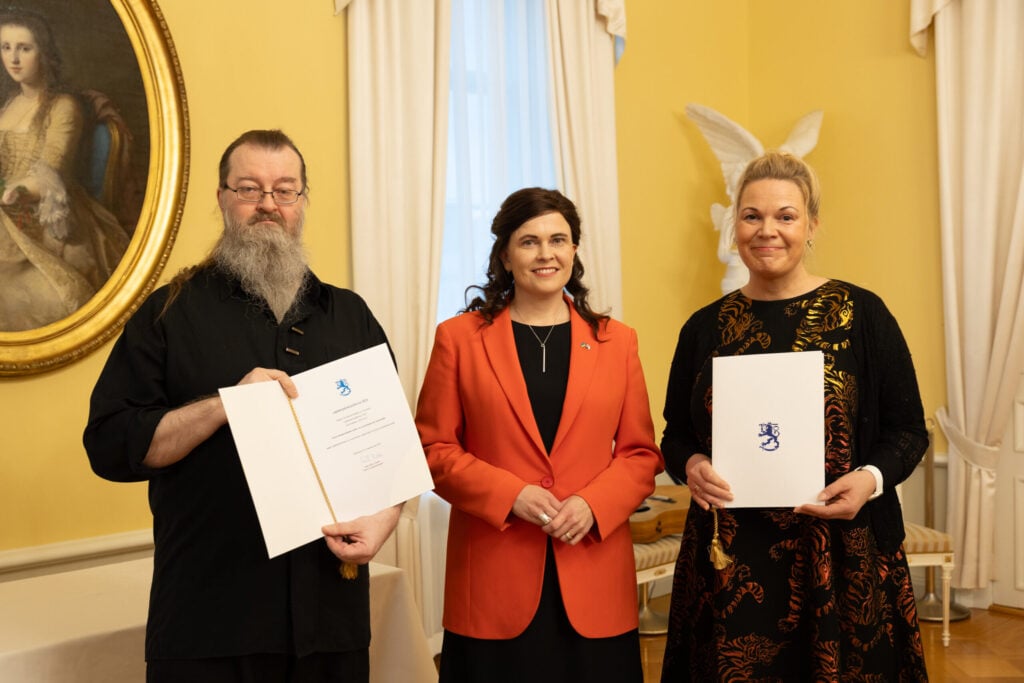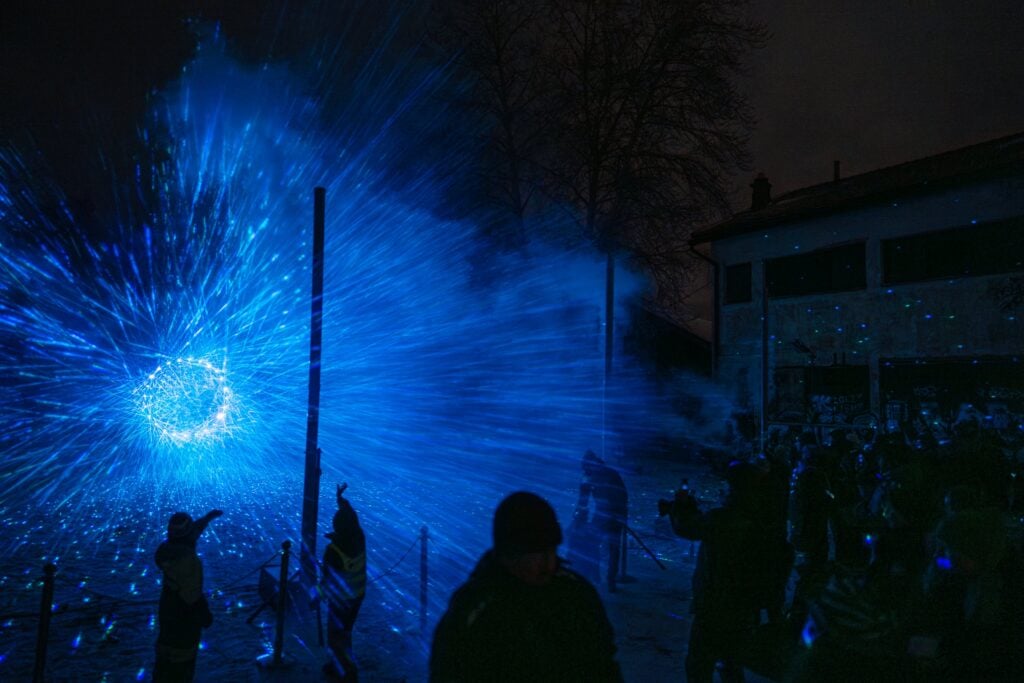- Part of Oulu2026’s European Capital of Culture programme, Climate Clock is a permanent public art trail that reflects on our relationship with nature and climate warming, and awakens us to the rhythms of the earth.
- Spanning natural and urban settings, leading artists are creating site-specific artworks in collaboration with scientists and local communities, featuring sculpture, ceramics, natural materials, sound and kinetic forms.
- Rooted in Oulu’s cultural identity and celebrating its distinctive histories, communities and natural environments, the project marks a major new international contemporary art landmark in Northern Finland
- Featuring works by Ranti Bam (UK/Nigeria), Rana Begum (UK/Bangladesh), Takahiro Iwasaki (Japan), Gabriel Kuri (Belgium/Mexico), Antti Laitinen (Finland), SUPERFLEX (Denmark) and Tellervo Kalleinen and Oliver Kochta-Kalleinen (Finland)
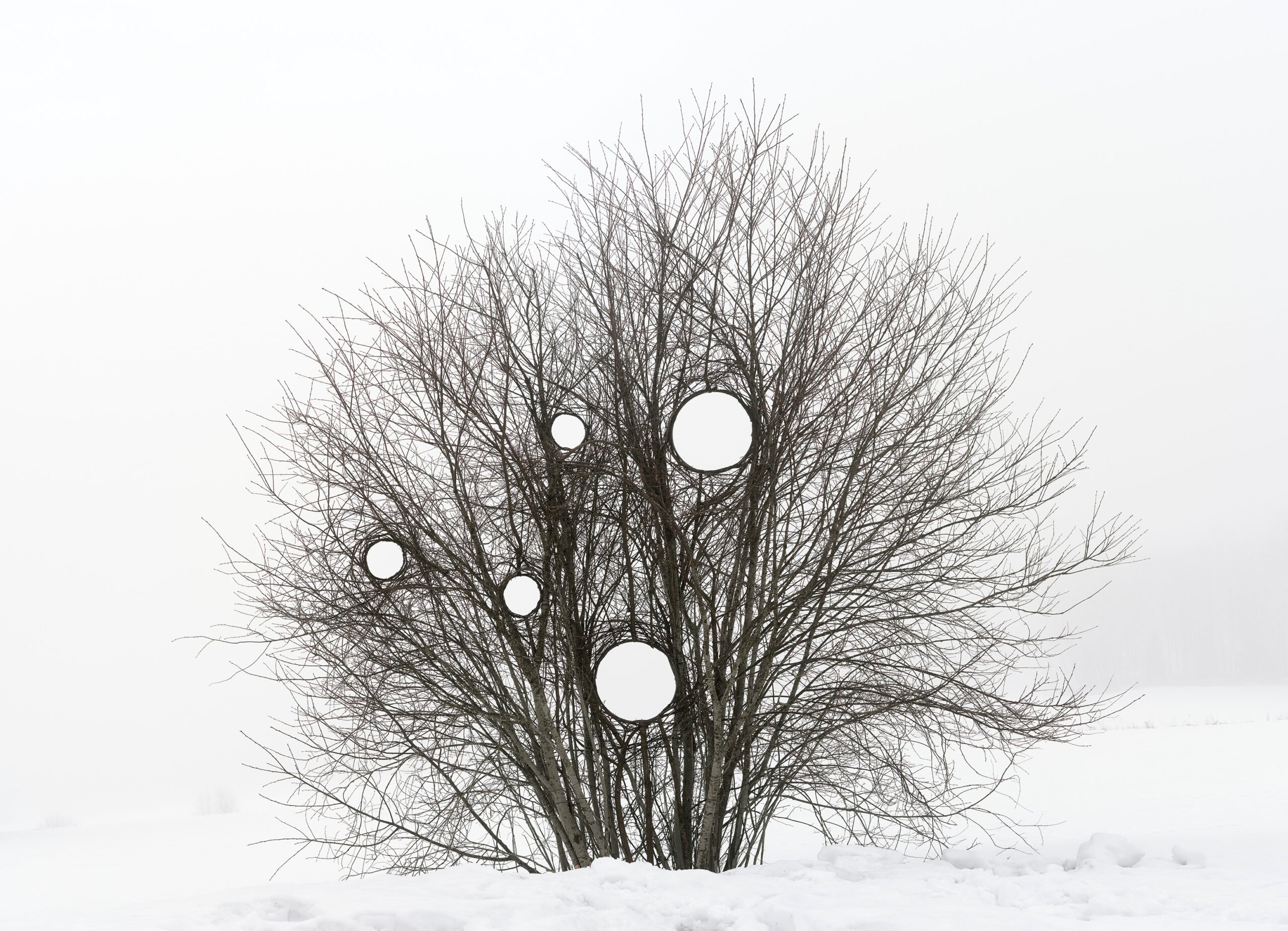
Oulu2026 in Northern Finland announces the seven artworks that will form Climate Clock, one of the most significant productions of the European Capital of Culture programme. Launching on 13 June 2026, this landmark project brings together leading Finnish and international artists in a permanent public art trail across the Oulu region — creating a lasting cultural and environmental legacy. From monumental clay vessels and marine sound installations to interventions within living landscapes, Climate Clock intertwines art, science and nature to inspire environmental awareness and a renewed connection with nature’s time. Curated by Alice Sharp, founder of the UK-based organisation Invisible Dust, the trail invites audiences to reconnect with the natural world at a time when Oulu – the third northernmost city in the world with over 100,000 inhabitants – is experiencing the effects of Arctic warming four times faster than the global average.1
Six permanent, site-specific artworks, each distinct in scale and medium, will be located across Yli-Ii, Oulu city centre, Ylikiiminki, Oulunsalo, Kiiminki and Haukipudas, while a seventh, community-created piece — The Most Valuable Clock in the World — will share local stories of time. Spanning forests, rivers and seashores, each of the permanent works offers a unique encounter with Oulu’s diverse landscapes, inviting reflection on how we can renew and sustain our bond with nature. Sharp has worked closely with each artist, pairing them with specialist scientific advisors — including a lichen biologist, snow hydrologist, archaeologists, a glaciologist and climate scientists from the Universities of Oulu, Uppsala, Lapland, and Helsinki. These collaborations between art and science – which echo Oulu2026’s core theme of ‘cultural climate change’ – enrich every work, drawing on local stories, topology, prehistoric heritage and climate research to illuminate the fragility of our environment in a time of profound change.
In Yli-Ii, British-Nigerian artist Ranti Bam’s Ilé-Ìlá brings the ancient craft of sculpting clay into dialogue with the surrounding forest at the Kierikki Stone Age Village. Eight clay vessels, each 2.5 metres high will be positioned among the trees and near the lakeshore. The work draws on prehistoric ceramics and their spiritual resonance, intertwined with Bam’s interest in Ifá, the Yoruba system of knowledge and divination from her Nigerian heritage. Formed through the artist’s direct, physical engagement with clay, these tactile sculptures evoke the profound bond between humans and the earth, echoing through a landscape layered with archaeological memory.
In the heart of Oulu’s city centre, Rana Begum transforms Kauppurienaukio Square with No.1574 Stone: five monumental stone sculptures that rise from beneath the paving referencing glaciers and the geometric forms of the sea ice. Developed with glaciologist Professor Alun Hubbard (University of Oulu; featured on BBC’s Frozen Planet), Begum’s colours and textures will refract the northern light and recall the shimmer of Arctic ice – connecting urban life with both the urgent destructive melting and shifting rhythms of the natural world.
On the beach at Ylikiiminki, Japanese artist Takahiro Iwasaki’s installation is inspired by both Oulu’s tar-making heritage and the research of snow hydrologist Associate Professor Pertti Ala-Aho (University of Oulu). Inside a 3-metre-high traditional wooden barrel, visitors will peer through small openings to discover hundreds of delicate symmetrical snowflakes – which resemble the architecture of the local church designed by Jacob Rijf, an eighteenth century Ostrobothnian church builder – illuminated in the dark. Entitled Architectural Snowflakes: Letters from Heaven – a quote by Japanese scientist Ukichiro Nakaya – Iwasaki’s work transforms the barrel into a celestial observatory, linking the fragility of snow and light with Oulu’s cultural and natural heritage.
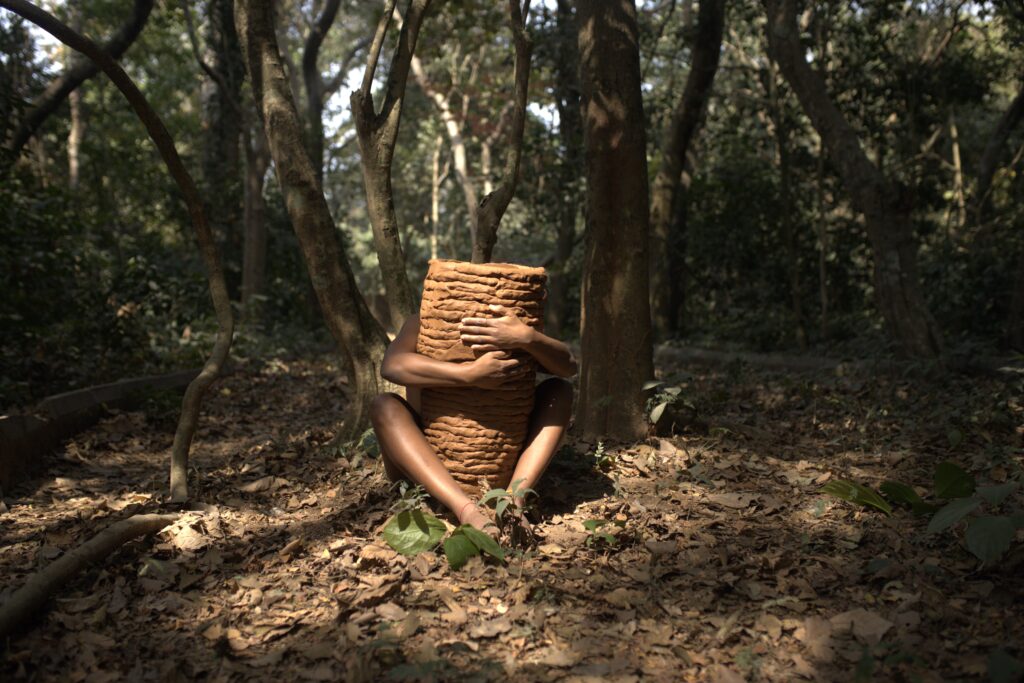
In Oulunsalo, Gabriel Kuri’s Risk Assessing Risk Assessment will stretch across both sides of the main road from Oulu city to the airport, transforming a familiar thoroughfare into a terrain of climate risk. Following consultation with climate scientist Professor Kevin Anderson about how we navigate the enormous uncertainties of climate change, the work sees lampposts, benches and rocks painted in the exact green, orange and red hues of a risk assessment chart, calibrated to their elevation within the landscape. Together, the colours form a dynamic gradient that immerses passers-by and commuters in a tangible experience that reflects the prevalence of climate uncertainty in everyday life.
In the forests of Kiiminki, Finnish artist Antti Laitinen presents Olet Tässä (You Are Here), a meditative work that plays with perspective and presence. Inspired by the symbol that locates us on a map, Laitinen will create circular openings within the forest, formed by twisting branches to frame the view of the landscape. Nearby, two lichen-covered spheres suspended from the trees will turn in the wind, echoing the nearby Koiteli rapids and attuning the viewer to movement in nature. Through the use of lichen, which lives for hundreds of years, the spheres become like pendulums: living instruments of time.
Along the coastal area of Haukipudas, the Danish collective SUPERFLEX presents Super Kello: a two-metre-high pink marble ‘fish cube’ structure named after the local fishing village and the Finnish word for ‘bell’, in which it is shaped. Visitors can sit inside the sculpture and hear one word per hour from a Finnish translation of Homer’s The Odyssey, spoken by a local fisherwoman. It will take ten years for the entire work to be read aloud, symbolically encouraging visitors to slow down and experience time differently. Sustainably built as blocks of human architecture without producing any waste, the structure can also function as a habitat for marine life, and has been designed to withstand rising sea levels.
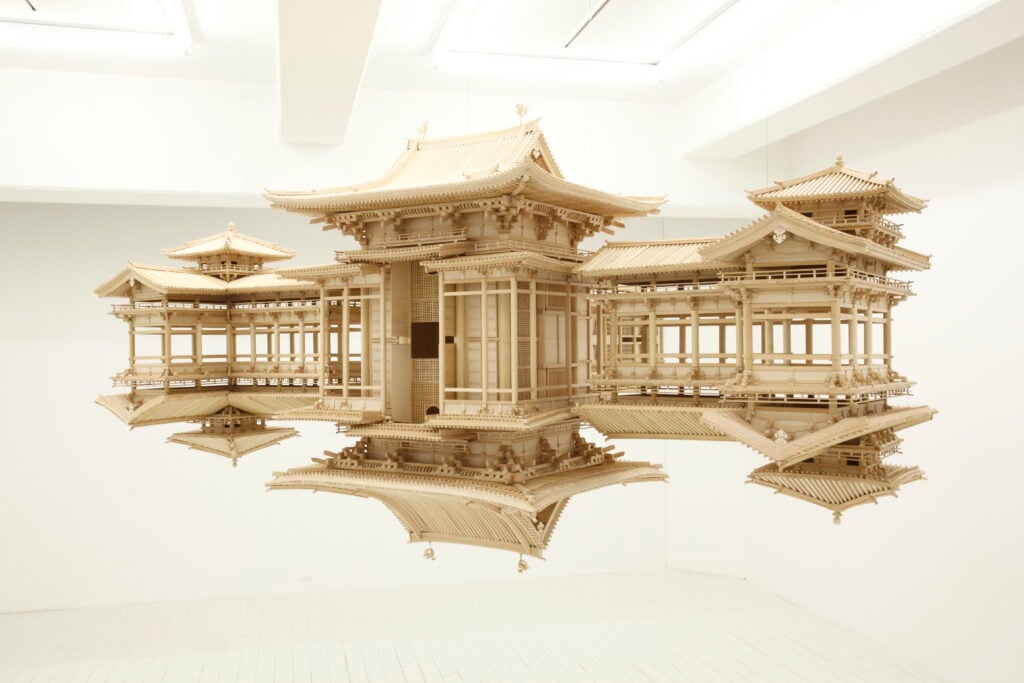
Completing the trail, Finnish artists Tellervo Kalleinen and Oliver Kochta-Kalleinen will present The Most Valuable Clock in the World, a large-scale mechanical–electronic artwork developed over the past two years in collaboration with the people of Oulu. The clock will travel around the region, displaying valuable moments donated by local residents through moving images. Created together with scientists, the hour hand reflects the priceless moments from Oulu’s annual cycle, the minute hand reveals precious everyday moments, and the second hand captures brief, joyful glimpses of life. Together, these visual segments form a living portrait of the relationship between the people of Oulu and the nature that surrounds them, capturing what the local community values in 2025.
Programmed and managed by international producer Claudia Woolgar, Climate Clock is a production of the Oulu Culture Foundation and each work will form part of the Oulu Art Museum collection after 2026. The project embodies Oulu2026’s central theme of ‘Cultural Climate Change’, harnessing art to spark environmental awareness, inspire optimism, and enrich the region’s cultural life for generations to come.
“While at COP30, as the world is focused on whether we will address the climate crisis, ‘in time’, we are delighted to reveal the Climate Clock Oulu2026 artworks – bringing immediate attention to our fast-changing Arctic natural environments and the necessity of slowing down and living interconnected with nature.” – Alice Sharp, curator of Climate Clock.
“Climate Clock is one of the signature projects of Oulu2026, bringing the urgency of climate change into focus through an outstanding group of artists unlike anything previously seen in our region. We believe the trail will resonate widely and continue to draw visitors long after 2026, becoming both a meaningful cultural landmark and a way of placing Oulu’s visual arts scene firmly on the international stage.” – Ulla Viskari-Perttu, producer for visual arts at Oulu2026.
For further information about Climate Clock, and to read the curatorial statement, click here.
For press photos, click here.
Notes to Editors
Climate Clock press view: Thursday 11 – Friday 12 June 2026
Climate Clock public opening: Saturday 13 June 2026
About Alice Sharp
Alice Sharp, Artistic Director and founder of Invisible Dust UK in 2009, is a curator, speaker and advisor making the invisible visible, creating new international thinking on the ever pressing issues of climate futures; particularly through creating Forecast, Invisible Dust’s ongoing programme exploring what is shaping how we are thinking about the future of the planet. Imaginative thinkers she has collaborated with include Margaret Atwood, Ben Okri, Shezad Dawood and Zineb Sedira. Alongside Climate Clock, Sharp was selected for the British Council Malaysia Human Nature Delegation 2024; presentations include British Council ‘Circular Cultures’ Athens, Columbia University, New York; Davos 2020; the UN Development Programme Turkey; and hosting the International Association of Corporate Art Collections symposium in Madrid. @AliceWSharp
About Invisible Dust
Curator of Climate Clock, Alice Sharp, founded the art-science-climate organisation Invisible Dust in 2009 to create new UK and worldwide collaborations between artists and scientists to address our pressing future climate challenges. Through ambitious contemporary art commissions, exhibitions, and ongoing ‘Forecast’ events, Invisible Dust inspires new imaginative thinking and raises hidden voices to engage wide communities and audiences. Notable artists include Joan Jonas, Hito Steyerl, Elizabeth Price, Gayle Chong Kwan, Zineb Sedira and John Akomfrah. Scientific collaborators include from Istanbul University, Columbia University New York, and Imperial College London. Upcoming projects with Jeremy Deller and Emma Smith sees permanent outdoor artworks commissioned for ‘Wild Eye’ UK; ‘Forecast Turkey: Memory of Water’ and ‘Forecast India’ with Raqs Media Collective.
www.invisibledust.com
@invisible_dust
1 *Duffey, A., Mallett, R., Irvine, P. J., Tsamados, M., and Stroeve, J.: ESD Ideas: Arctic amplification’s contribution to breaches of the Paris Agreement, Earth Syst. Dynam., 14, 1165–1169, https://doi.org/10.5194/esd-14-1165-2023, 2023.
